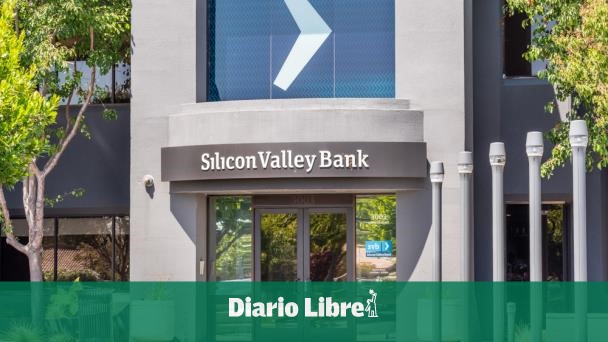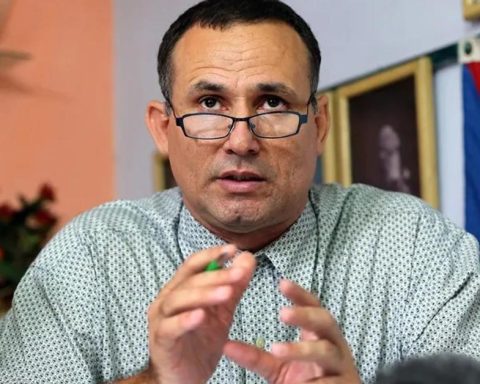The bank debacle Silicon Valley Bank (SVB), which has been intervened after its stocks will plummet in two consecutive days due to their serious financial problemshas affected the entire sector outside and within the United States this Friday and has aroused the fear of some investors that it constitutes the prologue to a new crisis.
Shares of SVB – a bank focused mainly on technology and science start-ups – plunged on Thursday a 60% and this Friday another fell 68%before its listing was suspended.
Subsequently, the California Department of Financial Protection and Innovation, where the bank’s headquarters are located, has taken control of the company, alleging lack of liquidity and insolvencywith the objective of protecting deposits insured by the Government.
Concern among investors
The fall of SVB, which had assets of approximately 209,000 million dollars and deposits for an approximate value of $175.4 billion as of December 31, 2022, is the biggest bank failure since the 2008 crisis and one of the most important in the history of the United States.
The sudden collapse of the entity based in Santa Clara (California, USA) has caused conflicting reactions among investors.
On the one hand, those who see what happened as the warning of a new financial crisis and, on the other, those who blame their debacle on problems that concern the own company and that they will not extend to the sector or to the rest of the economy.
“The rises of the interest rates They are slowing down the economy and that is weighing on the US economy,” said economist Lauren Goodwin of New York Life Investments, quoted by The New York Times.
For Goodwin “what is happening to the banking sector is indicative of what investors fear could happen to other parts of the economy if the interest rates They keep going up.”
The origin of SVB problems
SVB had invested excess liquidity achieved during the covid-19 crisis in long-term Treasury Bonds, assets that have been affected by the rise in interest rates sponsored by the Federal Reserve.
According to MarketWatch, the bank was not well positioned to face a situation of rising interest rates and a slowdown in loan growth.
The bank, focused on granting loans and capturing deposits from venture capital companies, said on March 8 that client cash spending had remained high and had continued to rise in February, causing “lower than expected deposits”.
Given this situation, on Wednesday, the entity announced the sale of some 21,000 million dollars in assets of his portfolio (bonds), in which he lost 1,800 million and after which he proposed a plan to execute a capital increase of about 2,250 million dollars to compensate said loss.
The objective of SVB, according to various specialized media, was increase your assets to “take advantage of the potential for rising interest rates in the short term, partially lock in financing costs, better protect net interest income (NII) and net interest income (NIM) and improve profitability.”
But adding to the drop caused by the sale was the fact that several investment advisory companies advised start-ups to withdraw their capital from the bankwhich redoubled the pressure on the entity that this morning has been intervened.
Contagion to other banks
Its fall, in addition to unleashing concern among investors, has affected the rest of the financial sector inside and outside the United States.
Yesterday several financial institutions were dragged down, such as Signature Bank, First Republic Bank or Western Allianceand its listing on the stock market was suspended due to its falls.
According to The Wall Street Journal, investors are punishing companies that have gambled on potentially tricky deals, such as PacWest Bancorpwhich today fell more than 30%.
Both the latter and First Republic they have focused their loan portfolio on the real estate sector and also, in part, on venture capital firms.
Likewise, the specialized channel CNBC, assured that investors are looking closely at institutions that, like the SVB, have opted for the Treasury bond long-term.
The main US financial corporations, for their part, were also affected, such as JPMorgan Chasewhich lost 5% yesterday, and Goldman Sachswhose shares were down 2%, although three hours after closing the shares of most major banks appeared to be stabilizing.
JPMorgan Chase rebounded at 1:15 p.m. local time by 1.68%, Bank of America lost 0.61%, Citigroup 0.39% was left, and Wells Fargo earned 0.67%, while others like U.S. Bancorp (-3.78%) and Goldman Sachs (-3.41%), continued to register significant falls.
The European financial institutions they also suffered heavy losses this Friday due to the SVB crisis.
In Spain, the Sabadell Bank and the Santander they lost more than 5%; in the London park, HSBC -the first bank in Europe by capitalization- also left more than 5%, along with barclays; while in Frankfurt the losses were led by Deutsche Bankwith more than a 7% drop, while the commerzbank around 2.5% was left.


















